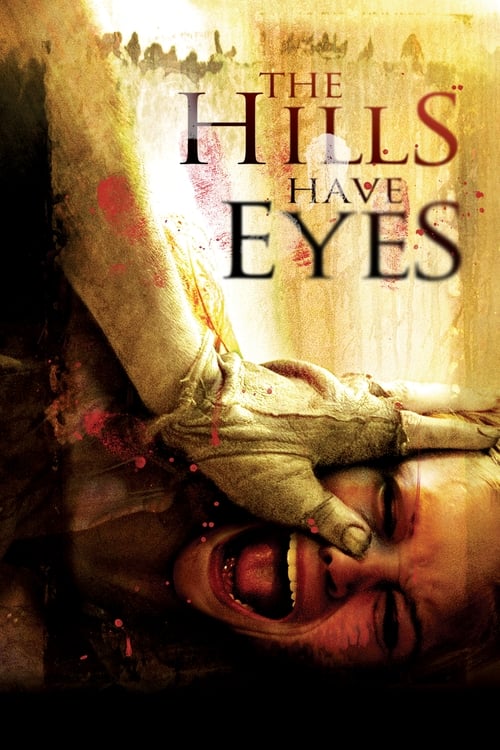The Hills Have Eyes – Film Review
Published August 24, 2023

Bob Carter and his wife Ethel, along with five other members of the family, are heading for San Diego with their camper vans. An accident strands them in the desert and while two of the men go for help, the others are forced to wait. They’re unaware that they’ve ended up stuck near the site where, decades earlier, nuclear tests gave rise to a group of mutant monsters who have developed a taste for human flesh.
Released in 2006 and directed by Alexandre Aja, The Hills Have Eyes is a remake of Wes Craven‘s 1977 cult classic of the same name. Aja’s version brings a modern and more visceral take on the harrowing tale of a family stranded in the desert, facing mutated cannibals. While the film’s intense visuals and unflinching brutality create a disturbing atmosphere, some narrative inconsistencies and character development issues prevent it from reaching its full potential. The Hills Have Eyes is a chilling experience that successfully captures the raw terror of survival horror, yet it stumbles when it comes to delivering a cohesive and emotionally engaging narrative.
One of the standout elements of The Hills Have Eyes is its powerful and nightmarish visual design. Alexandre Aja demonstrates his skill in creating tension through cinematography, utilizing the vast desert landscapes to magnify the characters’ vulnerability. The contrast between the harsh, sun-scorched environment and the dark, underground lairs of the mutants is particularly effective in generating a sense of dread. Aja’s use of handheld cameras contributes to the movie’s overall realism, intensifying the feeling of being stalked by an unseen threat.
The makeup and practical effects work deserve special praise for their contribution to the film’s horror. The mutants’ disfigured appearances are genuinely disturbing, evoking a visceral reaction from the audience. These grotesque visuals make the threat feel more immediate and tangible, heightening the tension as the characters fight for survival. Additionally, the sound design plays a crucial role in building suspense, with unsettling noises and eerie silence being used to great effect.
While The Hills Have Eyes excels in creating a sense of unease and dread, its narrative execution leaves something to be desired. The setup is familiar: a family stranded in a remote location, isolated and vulnerable, but the film struggles to maintain a consistent pace. The first act effectively builds tension as the family ventures into the desert and begins to realize they are not alone. However, as the plot progresses, the pacing becomes uneven, with stretches of slow development followed by bursts of intense violence.
Character development is another area where the film falls short. While the family members are established with basic traits, there is a lack of depth that prevents the audience from fully investing in their survival. As they face unimaginable horrors, their reactions often feel disconnected from their personalities, making it difficult to empathize with their plight. This lack of emotional resonance diminishes the impact of the terror they experience.
The Hills Have Eyes unapologetically embraces its status as a horror film, delivering shocking and disturbing scenes that stick with the viewer long after the credits roll. Alexandre Aja doesn’t shy away from gore and violence, and the film’s brutality adds to its unsettling atmosphere. The mutants’ relentless pursuit of the family creates a sense of hopelessness, and the graphic violence serves as a constant reminder of the perilous situation.
The film’s willingness to push boundaries and cross into uncomfortable territory is both a strength and a weakness. On one hand, it successfully captures the essence of survival horror by subjecting the characters and audience to unrelenting terror. On the other hand, the extremity of the violence and its frequency can lead to desensitization, potentially diluting the impact of individual scenes.
Beneath the surface, The Hills Have Eyes attempts to explore themes of primal instincts, the thin veneer of civilization, and the capacity for violence within humanity. The mutants are a reflection of the family’s worst fears and their own dark potential when faced with extreme circumstances. However, these themes are not fully developed, and the film doesn’t delve as deeply into them as it could have. This lack of depth prevents the movie from transcending its status as a straightforward horror-thriller.
Alexandre Aja’s remake of The Hills Have Eyes is a visually striking and visceral horror experience that captures the essence of survival horror. The film’s intense visuals, unrelenting brutality, and nightmarish atmosphere succeed in creating a sense of terror that lingers. However, the narrative inconsistencies, underdeveloped characters, and occasional pacing issues prevent it from reaching its full potential. While it excels in delivering shocks and scares, it falls short in creating a fully engaging and emotionally resonant story. Despite its flaws, the film’s willingness to confront uncomfortable subjects and push boundaries makes it a memorable entry in the horror genre.
